July 26th, 2025 | by Anne Keller
Welcome to another edition of Quench’d! We love this story, written by Anne Keller, one of the co-founders of the iconic Hot Tomato in Fruita, a co-owner of Best Slope Coffee in Fruita, and an action sports photographer!
We hope you enjoy Anne’s story about working as a photographer in the cycling industry and empowering more women to shoot sports behind the lens!
Welcome to another edition of Quench’d! We love this story, written by Anne Keller, one of the co-founders of the iconic Hot Tomato in Fruita, a co-owner of Best Slope Coffee in Fruita, and an action sports photographer!
We hope you enjoy Anne’s story about working as a photographer in the cycling industry and empowering more women to shoot sports behind the lens!
I’ve told countless people not to smile for photographs over the years.
It was a topic of marital strife at times.
“You’re smiling,” I’d say to my partner.
“No, I’m not. My mouth is just open.”
“Well, it looks like a smile,” I’d reply, then reshoot the image, forcing fake seriousness.
Despite what folks on the trail might’ve said, mountain biking apparently wasn’t fun throughout the 2000s. Based on the imagery alone, it didn’t start looking enjoyable until recently. Before that, it was about as fun as a tooth extraction. Thirty-something men with perfectly trimmed beards and coordinated, but not too coordinated, outfits glared at cameras, while a handful of women athletes looked equally unamused.
For a sport with roots in neon-colored lycra, white Styrofoam helmets, and bar ends, we took a sharp left somewhere and got surprisingly full of ourselves.
I started photographing bikes for cycling publications in 2004. While I don’t recall it ever being explicitly stated by the magazines or companies placing ads, it was understood: this sport was supposed to look hard. There would be no smiles. I took to that mantra wholeheartedly.
I’ve told countless people not to smile for photographs over the years.
It was a topic of marital strife at times.
“You’re smiling,” I’d say to my partner.
“No, I’m not. My mouth is just open.”
“Well, it looks like a smile,” I’d reply, then reshoot the image, forcing fake seriousness.
Despite what folks on the trail might’ve said, mountain biking apparently wasn’t fun throughout the 2000s. Based on the imagery alone, it didn’t start looking enjoyable until recently. Before that, it was about as fun as a tooth extraction. Thirty-something men with perfectly trimmed beards and coordinated, but not too coordinated, outfits glared at cameras, while a handful of women athletes looked equally unamused.
For a sport with roots in neon-colored lycra, white Styrofoam helmets, and bar ends, we took a sharp left somewhere and got surprisingly full of ourselves.
I started photographing bikes for cycling publications in 2004. While I don’t recall it ever being explicitly stated by the magazines or companies placing ads, it was understood: this sport was supposed to look hard. There would be no smiles. I took to that mantra wholeheartedly.
I also started shooting in an era when there were truly only a handful of women doing the same. I witnessed the shift when companies began realizing women existed in the sport and started marketing to them, sometimes in cringe-inducing ways. "Women’s issues" of sports magazines would appear, generously giving us one month out of twelve, but the content was still largely shot by men. We existed in the sport. We just didn’t yet exist in the media around it.
Across photography more broadly, women make up about 50% of the field. That includes weddings, portraiture, lifestyle work. But when you narrow it down to the outdoor industry, and more specifically to action sports, that number drops to between 10 and 15%. It’s still a bit of a lonely island out there.
Last year, I participated as a mentor in a women’s photography mentorship program that paired up-and-coming femme creatives with experienced professionals in the outdoor world. It was a highlight of my 2024. The program recognized the participation gap and aimed to break down some of the barriers that keep women out of those roles. It was transformational, even as a mentor. The sheer number of applicants showed just how much interest there is in shifting who’s behind the lens and how important that perspective shift can be.
It might be far-fetched to link the rise in women photographing biking with the rise in biking actually looking fun, but I’m going to make that stretch. Somewhat gone is the ‘No Smile’ rule, and I’m blaming the ladies.
I also started shooting in an era when there were truly only a handful of women doing the same. I witnessed the shift when companies began realizing women existed in the sport and started marketing to them, sometimes in cringe-inducing ways. "Women’s issues" of sports magazines would appear, generously giving us one month out of twelve, but the content was still largely shot by men. We existed in the sport. We just didn’t yet exist in the media around it.
Across photography more broadly, women make up about 50% of the field. That includes weddings, portraiture, lifestyle work. But when you narrow it down to the outdoor industry, and more specifically to action sports, that number drops to between 10 and 15%. It’s still a bit of a lonely island out there.
Last year, I participated as a mentor in a women’s photography mentorship program that paired up-and-coming femme creatives with experienced professionals in the outdoor world. It was a highlight of my 2024. The program recognized the participation gap and aimed to break down some of the barriers that keep women out of those roles. It was transformational, even as a mentor. The sheer number of applicants showed just how much interest there is in shifting who’s behind the lens and how important that perspective shift can be.
It might be far-fetched to link the rise in women photographing biking with the rise in biking actually looking fun, but I’m going to make that stretch. Somewhat gone is the ‘No Smile’ rule, and I’m blaming the ladies.
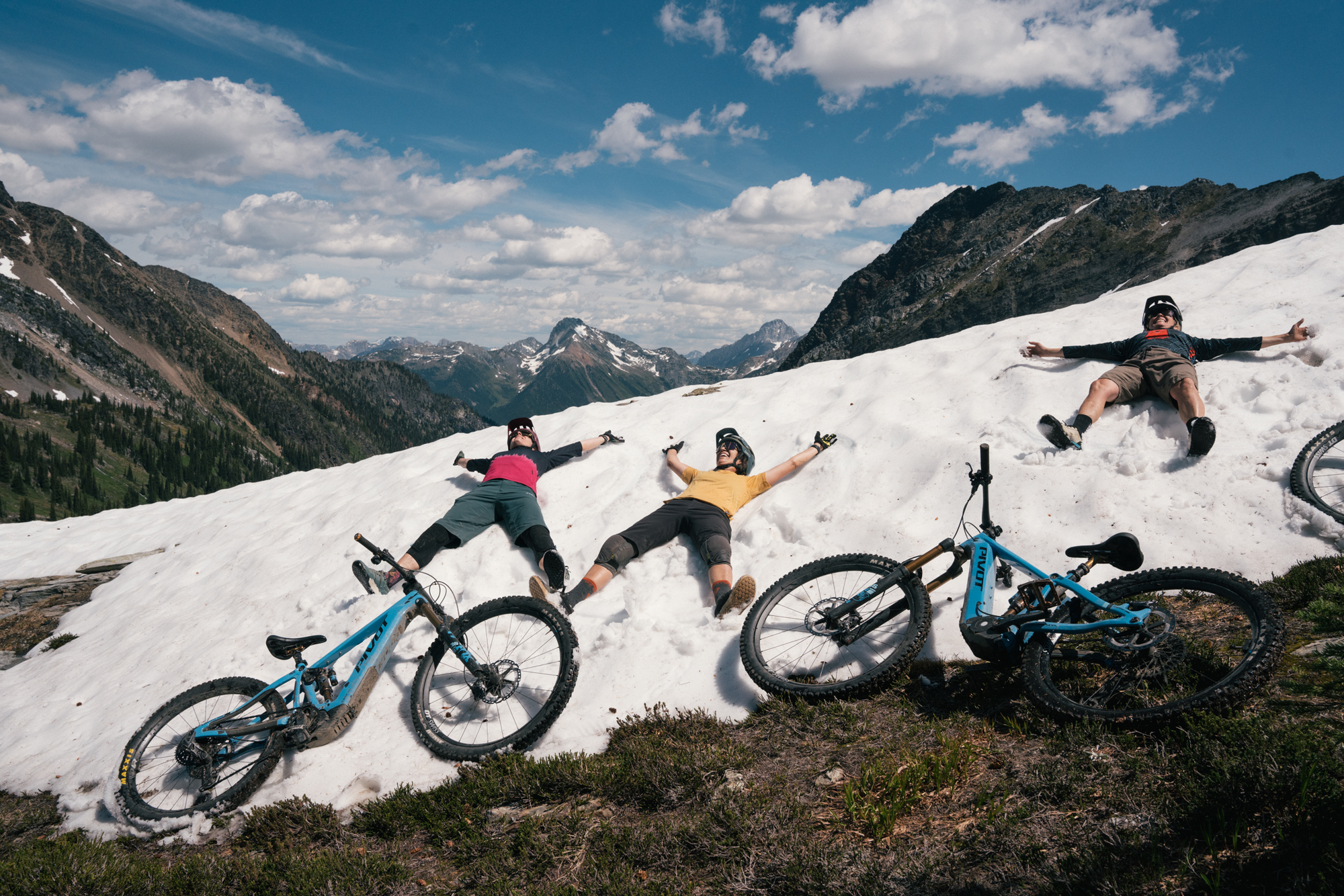

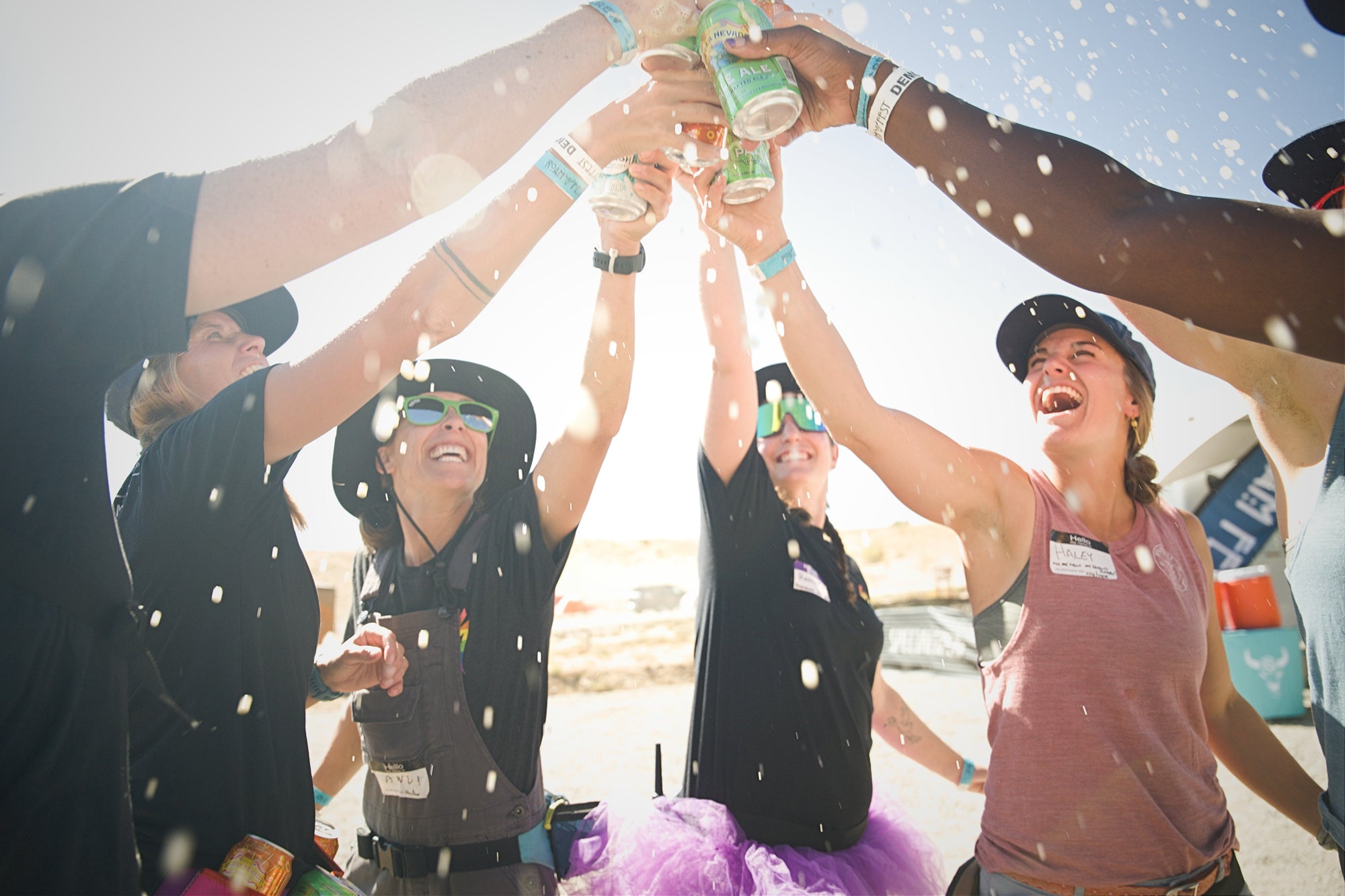

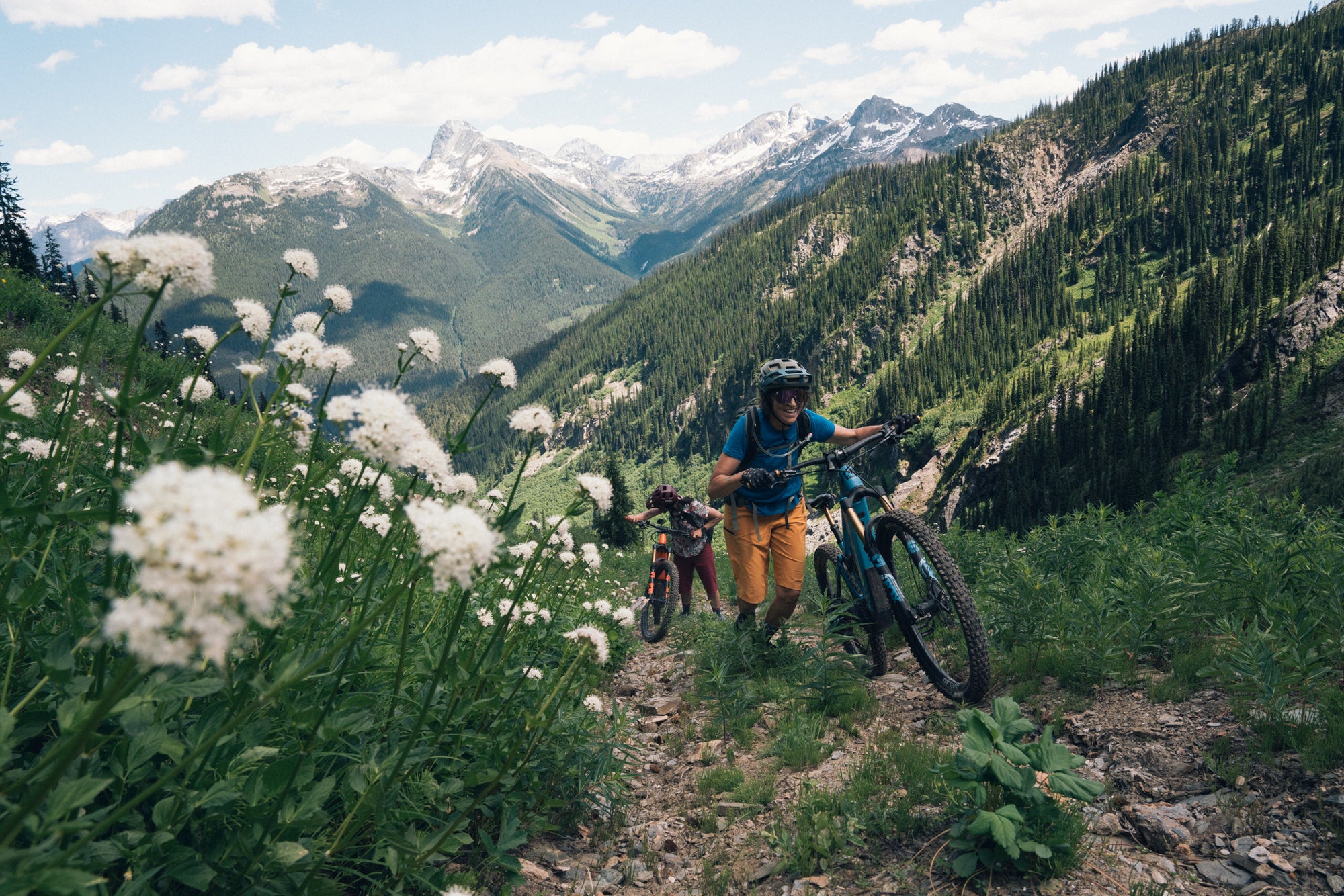

At the 2023 Roam Fest in Sedona, a place known for its jaw-dropping scenery and the festival’s sheer volume of fun, I overheard a group of women talking near the final-night dance party.
“This is not the Sedona Mountain Bike Fest,” one said, a clear reference to the gender disparity and the utterly ridiculous joy happening at that moment. I looked out over the crowd bouncing in unison to the playlist. There were animal costumes. Bright neon. Glitter. Tutus. Rainbow unicorn outfits. These were grown adults.
Leftover vestiges of those outfits made their way to the trails the next day.
At the 2023 Roam Fest in Sedona, a place known for its jaw-dropping scenery and the festival’s sheer volume of fun, I overheard a group of women talking near the final-night dance party.
“This is not the Sedona Mountain Bike Fest,” one said, a clear reference to the gender disparity and the utterly ridiculous joy happening at that moment. I looked out over the crowd bouncing in unison to the playlist. There were animal costumes. Bright neon. Glitter. Tutus. Rainbow unicorn outfits. These were grown adults.
Leftover vestiges of those outfits made their way to the trails the next day.
Part of my theory and my "blame the ladies" approach is that while men absolutely have fun on group rides (and I’ve had a lot of fun riding with my guy friends), they don’t always get the liberty of the totally unabandoned silliness that women are allowed. The social cues are shifting, though, and we’re starting to see that reflected in brand marketing.
Ladies’ rides have become events in themselves. The embrace of women in the cycling industry has led to an embrace of the culture that thrives in women’s spaces. And it’s a damn good time.
Look at any recent ad from Wild Rye, Shredly, Juliana, or Curious Creatures. These people are having fun. The culture is infectious. As an outsider, you want in. It feels inclusive, welcoming, actually enjoyable. The sport, while still hard, still gritty, feels more approachable when the general vibe is good times, not the glaring and the grimaces from the past.
The shift in brand marketing, while it may have developed independently of the growing number of women behind the lens, does line up strikingly in terms of timing. There are more successful women creatives working in the industry today, and the more forward-thinking brands are making an intentional effort to include them in campaigns. And because of it, I’m arguing that imagery is changing as well to be reflective of the current culture.
So yeah, the ladies are here, we’re riding, we’re shooting, we’re smiling, and we’re bringing our unicorn outfits with us. Look for us having fun at a trail, and in a magazine article near you.
Part of my theory and my "blame the ladies" approach is that while men absolutely have fun on group rides (and I’ve had a lot of fun riding with my guy friends), they don’t always get the liberty of the totally unabandoned silliness that women are allowed. The social cues are shifting, though, and we’re starting to see that reflected in brand marketing.
Ladies’ rides have become events in themselves. The embrace of women in the cycling industry has led to an embrace of the culture that thrives in women’s spaces. And it’s a damn good time.
Look at any recent ad from Wild Rye, Shredly, Juliana, or Curious Creatures. These people are having fun. The culture is infectious. As an outsider, you want in. It feels inclusive, welcoming, actually enjoyable. The sport, while still hard, still gritty, feels more approachable when the general vibe is good times, not the glaring and the grimaces from the past.
The shift in brand marketing, while it may have developed independently of the growing number of women behind the lens, does line up strikingly in terms of timing. There are more successful women creatives working in the industry today, and the more forward-thinking brands are making an intentional effort to include them in campaigns. And because of it, I’m arguing that imagery is changing as well to be reflective of the current culture.
So yeah, the ladies are here, we’re riding, we’re shooting, we’re smiling, and we’re bringing our unicorn outfits with us. Look for us having fun at a trail, and in a magazine article near you.
If you are interested in Fruita mountain biking and visiting Best Slope and Hot Tomato, check out our Roamer article, The Best Mountain Bike Rides Near Fruita, CO!
If you are interested in Fruita mountain biking and visiting Best Slope and Hot Tomato, check out our Roamer article, The Best Mountain Bike Rides Near Fruita, CO!
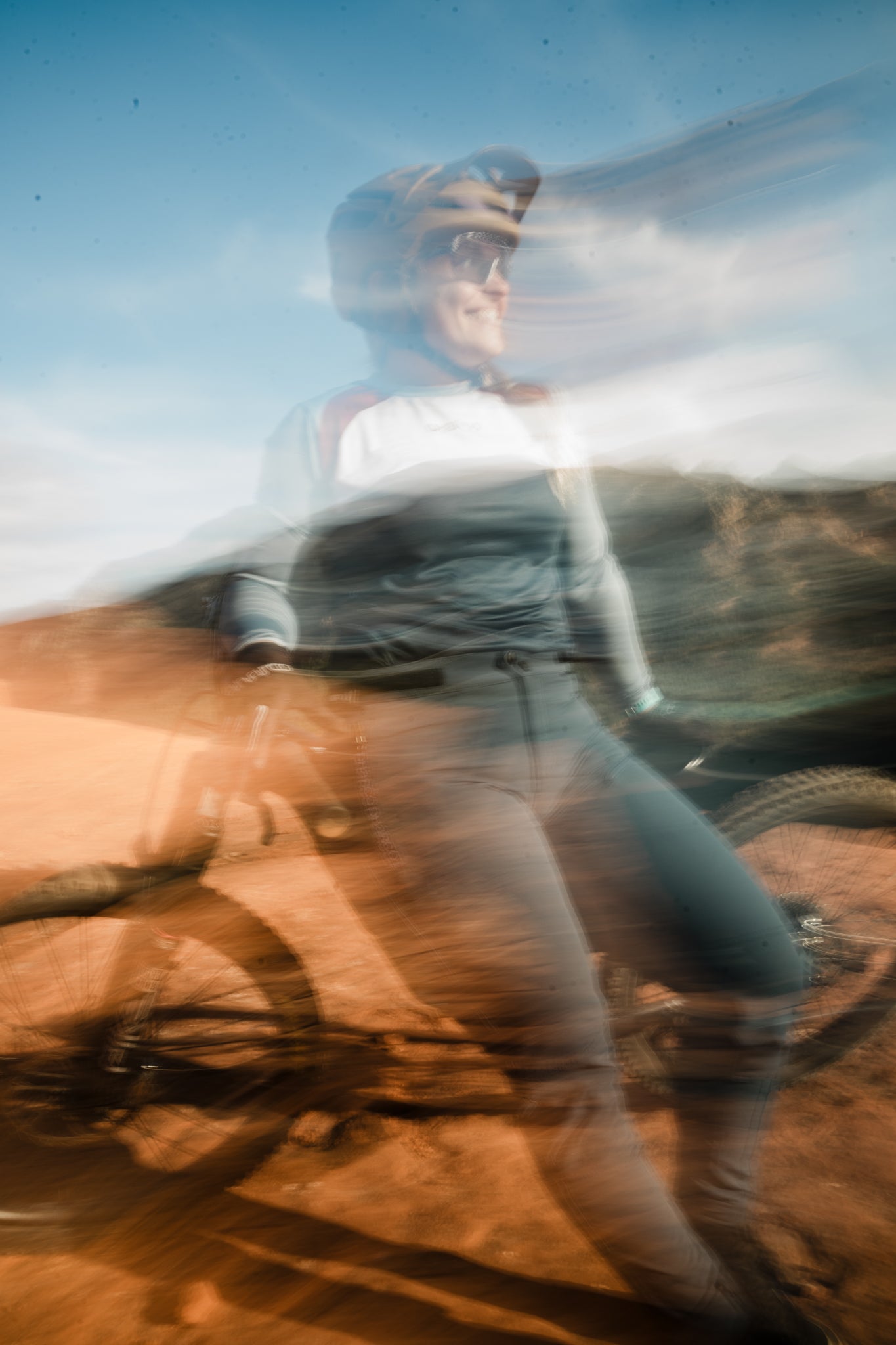
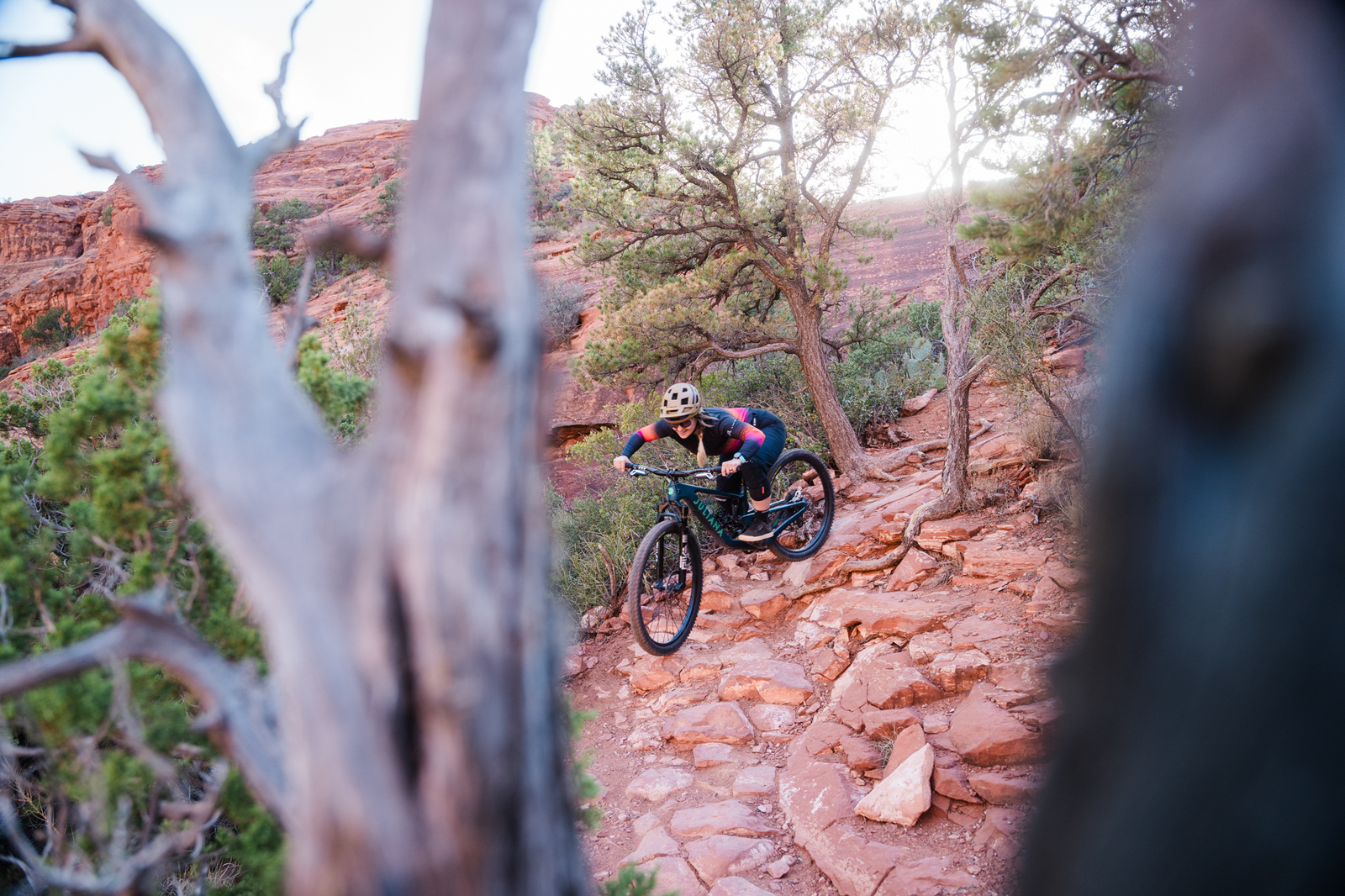
Tim Eliassen
July 28, 2025
This piece hits several notes for me. You are right that mountain biking changed its stripes as we entered the 2000’s. Through the late 80’s and 90’s men, women, boys and girls were all riding and having fun finding new trails, new skills and new friends. Even mountain bike racing under the NORBA banner was more fun than serious. Everyone in the races sat around after the race enjoying each other, talking about the race and mountain biking in general. Hopefully we can return to everyone having fun and stop featuring just your 30 something males with neat beards.
The other note is: Fruita rocks. The whole town radiates the fun of mountain biking, and this is coupled with many, many incredible trails. And who can’t love the tale of Mike the headless chicken? Google it! (This from a guy who lives in New Hampshire.)